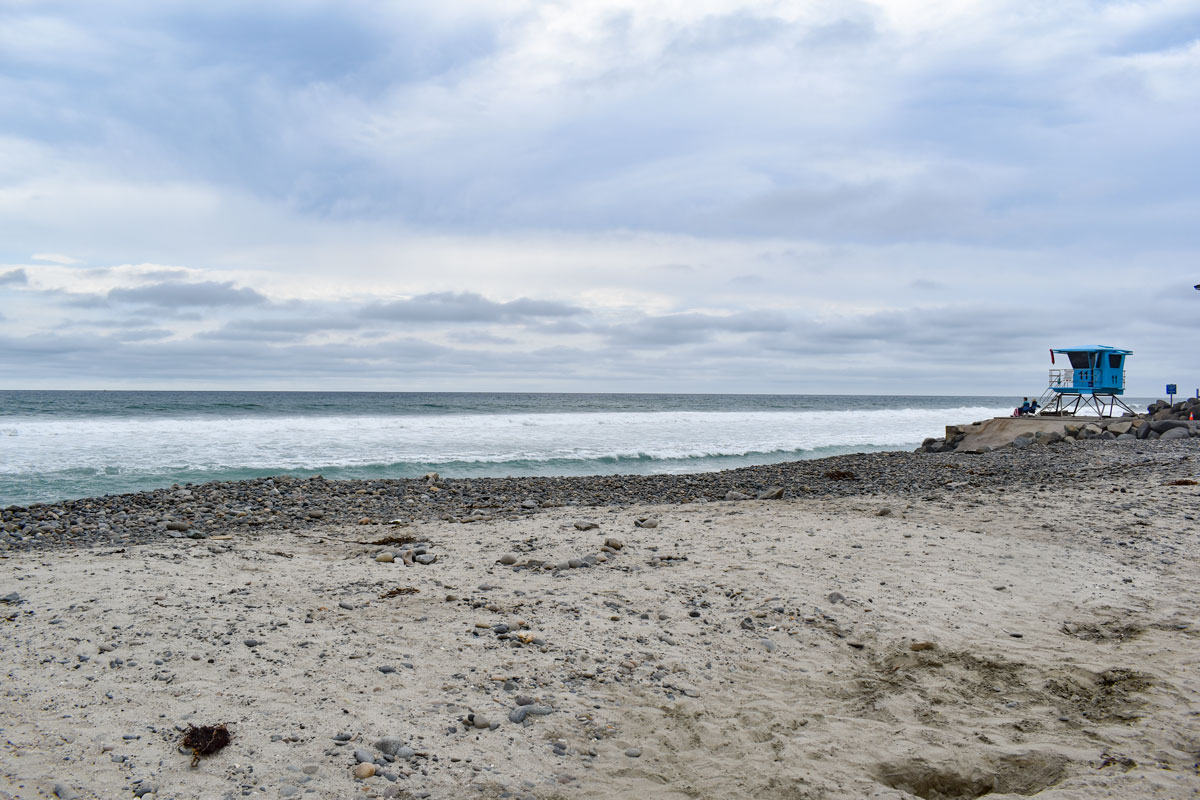OCEANSIDE — The City of Oceanside is installing several groins and a sand bypass system as part of a newly approved pilot project meant to improve the city’s disappearing beaches.
During a special workshop on Aug. 11, the Oceanside City Council voted 4-1 to approve the pilot project as recommended by the Beach Sand Replenishment and Retention Device Feasibility Study. The study was initiated by the city’s Public Works Department, which hired engineering consultant GHD to help consider various pathways the city could take to replenish and retain sand.
Oceanside has been struggling with beach erosion for nearly 80 years following the construction of Camp Pendleton’s harbor in 1942.
“We’ve been losing our shoreline for years,” said Public Works Director Kiel Koger. “In the past 20 years since being monitored, we have lost our shoreline at a rate of 3 feet per year on average.”
Sand nourishment projects alone have not been helping to keep sand on the beach.
While efforts to replenish the sand on the city’s beaches from projects like dredging the harbor, the sand taken from that process and put on the city’s beaches is finer grain sand that quickly makes its way from the beach into the inner tidal zone and eventually ends up back in the harbor trapped like before due to shifting north and south swells.
Other regional beach fills from the US Army Corps of Engineers in 2001 and 2012 brought courser sand to the beaches, but that sand quickly dispersed further south, benefitting cities like Carlsbad and its Tamarack State Beach, which has its own jetty to trap sand there.
The study considered four different alternatives for fixing the sand situation in Oceanside: more beach nourishment, groin installations, a south jetty extension or an artificial reef.
Groins, which are perpendicular hard structures made out of rock that is used to maintain beaches by capturing sand moving in the longshore direction, scored the best in terms of strategy for beach sand retention.
The city will start the pilot project by installing four groins somewhere south of Wisconsin Street along the city’s beaches to test their effectiveness. If determined to be successful, the project will add more groins on an as-needed basis along the city’s coastline.
The project will also install a sand bypass system that would transport pumped sand to beaches via a network of underground pipelines. The system would work in conjunction with the Army Corps of Engineer’s annual Harbor dredging program, thus limiting disruption to public beach access uses during each dredging event.
The city is also looking for other sources of sand, including from places like El Corazon, San Luis Rey River and the future Buena Vista Lagoon restoration project.
The project will begin with an “adaptable and reversible” design that will be informed by a scientific monitoring program led by the Scripps Institution of Oceanography.
According to Koger, most of the public comments the city has received were in favor of the groin project, though there was a significant amount of opposition from both Oceanside residents and other neighboring cities as well.
Groins are not a new technology and have been used for decades by various Southern California cities. While groins have been shown to help build up the beach to the north of it, they are also known to prevent sand from flowing to a neighboring beach to the south.
Some residents from nearby cities like Solana Beach, Encinitas and Carlsbad wrote to Council, and in some cases spoke to Council at its workshop, regarding the southerly concerns about the proposed groins taking away from their sandy beaches.
Mayor Esther Sanchez was the only council member to oppose the groin pilot project. She felt the study was flawed in some of its analyses and noted that she doubts the California Coastal Commission (CCC) will approve the permits necessary that would allow the city to move forward with the project.
“I don’t want to waste our million dollars on something that’s not going to get through,” Sanchez said. “I’d rather spend that money on getting sand on our beaches.”
Deputy Mayor Ryan Keim, who was in favor of moving forward with the project as soon as possible, said that although the CCC could say no, he wants the city to try everything possible to fix the city’s beaches.
“We arguably have some of the worst beaches in the county,” Keim said. “If they say no, they say no, but I want to make sure we’re doing everything we can.”
The next steps for the city include issuing request for proposals for design, permitting and environmental work on the pilot project. The city will need to work with not only the CCC but also Camp Pendleton, Surfrider Foundation and other local agencies.
The city will also conduct further analysis to determine the exact best location for the pilot project. Originally proposed at Wisconsin Street, Keim urged that the project be moved further south along the city’s coastline, a request that was also made by several South Oceanside residents who want to see beaches like Buccaneer and Cassidy fixed as soon as possible.







